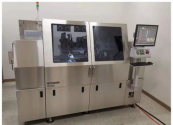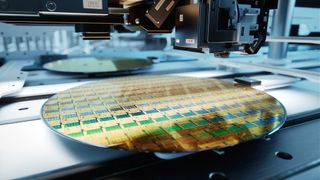One of the fields that China, which has ambitions to become a semiconductor superpower, is focusing on is DRAM.
For China, where the amount of DRAM required is by far the largest in the world, there is a goal of eliminating the situation in which DRAM manufacturers have become an oligopoly of three companies and prices remain high. For this reason, China is proceeding with mass production of DRAM at a rapid pace, but how far has it progressed?
This time, we looked into the production status and future investments of "CXMT (ChangXin Memory Technologies)", a Chinese DRAM manufacturer.
In addition, since the trend of CXMT is the part that I am paying attention to, I will add further comments to this analysis as new information comes in.
CXMT DRAM development and production status patent issues
Newcomers like CXMT have a problem of having few patents, but they announced in 2019 that they would adopt the technology of Qimonda (Germany), which went bankrupt in 2009, for manufacturing technology. The announcement was shocking news in the industry.
DRAM is classified into two types, "trench structure" and "stack structure", depending on the structure of the memory cell, Qimonda was good at trench structure.
However, since the trench structure is not suitable for miniaturization, Qimonda worked on the stack structure, which has become the standard in the DRAM industry, and combined it with the power-saving features derived from the trench technology, which Qimonda is good at, so "buried word line DRAM technology" was developed.
In 2008, the company started small-scale production of DRAMs using "embedded word line technology." However, in 2009, the business went bankrupt due to the worsening market conditions.
It seems that Qimonda's patents, after it went bankrupt, were held by its original parent company, Infineon (Germany).
Trends in patents after the Qimonda bankruptcy
Qimonda's strength in trench structure technology was transferred to Nanya Technology in Taiwan because it was not suitable for the times when miniaturization was required. Graphics DRAM-related technology had a small market size and limited demand, so it was sold to Elpida, who wanted it at the time. (Currently, Micron, which acquired Elpida, has the top share in graphics DRAM)
Primarily embedded word-line DRAM technology and other promising general-purpose technologies are available under license. ←This is what China CXMT acquired.
And it is said that a technical engineer who worked at Qimonda is also leading development.
Furthermore, in 2020, CXMT signed a DRAM-related licensing agreement with Rambus, which has a wealth of patents. It seems that the intellectual property problem is definitely being resolved so as not to be sanctioned by the US government.
Added April 2022
In addition, it seems that China's CXMT is in 10th place in the semiconductor-related category of the European patent application ranking in 2021, which can be said to be one proof that manufacturing technology and knowledge have been established.
Miniaturization process
According to CXMT's announcement, it acquired the 46nm stack structure DRAM technology of Qimonda in Germany, which went bankrupt in 2009, and shrinked the process technology with engineers recruited from all over the world, and mass production began with the 19nm process.
CXMT's technology development consisted of two teams, a development team recruited from a Taiwanese company and a development team from Samsung. The Taiwan team was developing 19nm, and the Samsung team was developing 17nm.
It seems that there was a plan to start mass production with 19nm first, and then shift to 17nm when production becomes smoother, and this seems will be realized in the future.
In March 2022, the yield of DDR3/DDR4 mass-produced products using the 17nm process will reach 40%, and shipments of niche DRAM are expected to begin in the second quarter (April to June) of 2022., according to a research company.
Manufacturing status of the three market leaders
In October 2021, Samsung reportedly started mass production with a 14nm process using EUV exposure equipment.
SK Hynix reportedly started mass production of 14nm process DRAM using EUV exposure equipment from July 2021.
Micron reportedly entered mass production of 13nm from November 2022. In addition, it announced that it will manufacture 12 to 13 nm without using EUV exposure equipment.
Each 1nm advance in miniaturization increases the amount of DRAM available from a 300mm wafer by up to 25%. Therefore, each manufacturer is competing with "1nm".
Yield (percentage of non-defective products)
As of 2020, it was said that the manufacturing good product rate (yield) had not yet improved, and it was said that the yield of the 19nm process was less than 50% in the industry.
And as of April 2022, it is clear that the yield of the 17nm process has reached 40%.
The industry consensus is that the business will not turn profitable unless the yield is 80% to 85% or higher. Samsung, SK Hynix, Micron, etc. are aiming for a yield of 90% or more.
Production volume and industry share
...
CXMT is said to have started aggressive sales from April 2022 due to an increase in the yields, so sales and market share will possibly increase in Q4 (October to December) of FY2022.
Status of factory construction and capital investment
Regarding the construction of the CXMT factory, as of 2021, it will own one huge factory in Hefei City with a monthly production capacity of 120,000 wafers. A second factory is expected to open in 2023.
As an investment target for manufacturing facilities, the monthly production capacity of 40,000 wafers by the end of 2020 is planned to be increased to 80,000 by the end of 2021 and to 120,000 by 2022. All investments are in the first fab in Hefei City.
Since the total monthly production capacity of all DRAM makers in the world is about 1.4 million, monthly production of 120,000 is about 7-8% of the world's DRAM production capacity.
According to Japanese manufacturing equipment manufacturers such as Tokyo Electron and SCREEN, 20 to 30% of sales are for China, and it is announced that orders from Chinese companies are strong, so inevitably demand from CXMT can be expected to be high.
Final target production volume
The original future production target for CXMT was 500,000 pieces per month. The goal was to build four factories with a monthly production capacity of 125,000 wafers per semiconductor manufacturing building.
125,000 x 4 = 500,000
This “500,000” target is the level of production volume of Samsung, the top DRAM in 2020. The tension is quite high, but the nation's wish was to compete with Samsung and lower the price of DRAM.
So CXMT used to aim for monthly production of 500,000 pieces, but now it seems that it is aiming for monthly production of 300,000 pieces for the time being. It is believed that behind this is due to the lack of growth in DRAM demand for smartphones, PCs, home appliances, etc., as well as the problem of the US-China conflict.





